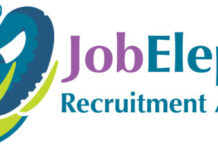
Return-to-office is no cure, and meetings may make the problem worse
TEMECULA, Calif., Nov. 08, 2023 (GLOBE NEWSWIRE) — America’s loneliness crisis is coming to work, with serious consequences for both employees and employers, according to new research from Perceptyx, the leading employee listening and manager effectiveness platform.
In the Perceptyx study, more than four in ten employees reported feeling “very” or “somewhat” lonely at work. Men were twice as likely as women to say they were very lonely, and senior leaders were twice as likely as lower-level managers or individual contributors to feel that way.
Generational differences played a role as well, with Gen Z and Millennial employees feeling more lonely than Gen X or Boomers.
Loneliness was associated with a wide range of negative outcomes. Lonely workers were 1.5 times likelier to be disengaged. They were 4.5 times more likely to struggle with productivity and between 4 and 6 times more likely to experience difficulty sleeping, engage in unhealthy coping mechanisms, be bothered by pain and behave badly to family and friends due to stress at work.
The data suggests returning to the office won’t solve the problem. While remote workers reported the highest levels of loneliness, only 35% of “very lonely” remote workers thought spending more time in the office would improve their condition. Additionally, it’s hybrid workers, who work from the office part of the week and the rest from home, rather than in-person employees, who are the least lonely of all.
Ironically, meetings might make the problem worse. Employees with meeting-heavy schedules were twice as likely to say they were “very lonely” as those with fewer meetings.
“Our study indicated that the more meetings you have, the lonelier you feel,” said Emily Killham, Senior Director, People Analytics, Research and Insights at Perceptyx. “It sounds counterintuitive, but it’s actually not surprising. Many organizations have replaced organic interactions with overscheduled time, particularly for remote and hybrid employees. But employees tell us that it’s not having the desired effect. Simply being in a meeting with others doesn’t create connection or relationships. In fact, spending most of the time in meetings is not good for the overall employee experience, which can bring out feelings of disconnection and loneliness.”
Rather than focusing on time in the office or number of meetings, Perceptyx recommends employers focus on the quality of interaction. Employees who feel appreciated at work or motivated by their company’s values are more than twice as likely to report no loneliness, and those with a good connection to their manager, 1.4 times as likely. Organizations should also focus their efforts on the newest employees: Workers who were in their job less than six months were the loneliest, but after six months loneliness levels became fairly consistent regardless of the employee’s tenure.
“While remote work and loneliness are linked, that connection is complex,” Killham said. “Remote workers often prefer to work from home for specific reasons. Forcing them back to the office sends their engagement plummeting, which in turn drives up loneliness and all the associated health and productivity implications. To solve the problem, employers need to create a culture of trust, respect, and cooperation — and, yes, opportunities for teams to spend some quality time together in-person.”
The findings are part of Perceptyx’s third annual Employee Experience Survey, “Loneliness as an Organizational Crisis: A Persona-Based Approach to Navigating Through the Silence.” The company surveyed 2,818 workers in October 2023. The study tracks trends across four employee ‘personas’: the Neglected, Disconnected, Contented, and Energized and their impact on the performance of an organization. For more details, read the full report here.
| Who is Lonely? | |||
| Very Lonely | Somewhat Lonely | Not Lonely | |
| Part Time | 8% | 35% | 57% |
| Full Time | 11% | 33% | 57% |
| Work Location: Remote | 14% | 44% | 42% |
| Work Location: Hybrid | 8% | 29% | 63% |
| Work Location: In Person | 10% | 31% | 58% |
| Leaders | 16% | 28% | 56% |
| Managers | 8% | 34% | 58% |
| Individual Contributors | 8% | 37% | 56% |
| Persona: Neglected | 13% | 43% | 44% |
| Persona: Disconnected | 8% | 44% | 48% |
| Persona: Contented | 10% | 28% | 63% |
| Persona: Energized | 14% | 13% | 73% |
| Fully Engaged | 10% | 26% | 64% |
| Not Fully Engaged | 11% | 43% | 46% |
| No Meetings in Typical Week | 6% | 32% | 62% |
| Regular Meetings in Typical Week | 12% | 34% | 54% |
| Tenure: Less than 6 months | 17% | 37% | 46% |
| Tenure: 6 months to 3 years | 9% | 42% | 50% |
| Tenure: 3 to 5 years | 10% | 32% | 59% |
| Tenure: 7 to 10 years | 13% | 30% | 57% |
| Tenure: 10 plus years | 7% | 23% | 70% |
| Male | 15% | 32% | 54% |
| Female | 7% | 34% | 58% |
| Gen Z | 12% | 43% | 46% |
| Millennial | 14% | 33% | 54% |
| Gen X | 6% | 33% | 61% |
| Boomers | 3% | 22% | 75% |
| Live Alone | 10% | 35% | 55% |
| Live With People | 10% | 33% | 57% |
| Live With Pets | 11% | 34% | 55% |
| Very Lonely in Life | 1% | 15% | 84% |
| Somewhat Lonely in Life | 13% | 54% | 33% |
| Not Lonely in Life | 1% | 15% | 84% |
| Mostly Introverted | 26% | 33% | 41% |
| More introverted than extroverted | 13% | 44% | 43% |
| More extroverted than introverted | 9% | 38% | 53% |
| Mostly extroverted | 12% | 22% | 66% |
About Perceptyx
Since its founding in 2003, Perceptyx has been redefining the employee insights industry, delivering enterprise-level employee listening and people analytics to more than 600 customers, including one-third of the Fortune 100. With an unrivaled technology platform and a tailor-made, flexible approach, the Perceptyx platform makes it easy for managers, HR executives and business leaders to discover insights deep within large and complex organizations, driving meaningful action to improve business outcomes. Driven by a deep intellectual curiosity and a culture of innovation, Perceptyx is challenging the status quo — to help people and organizations “see the way forward.”



